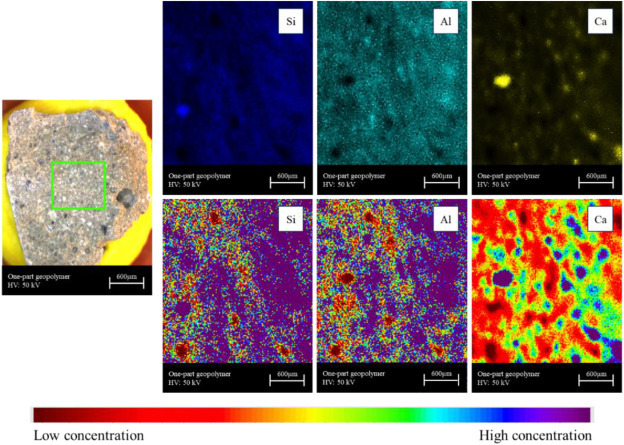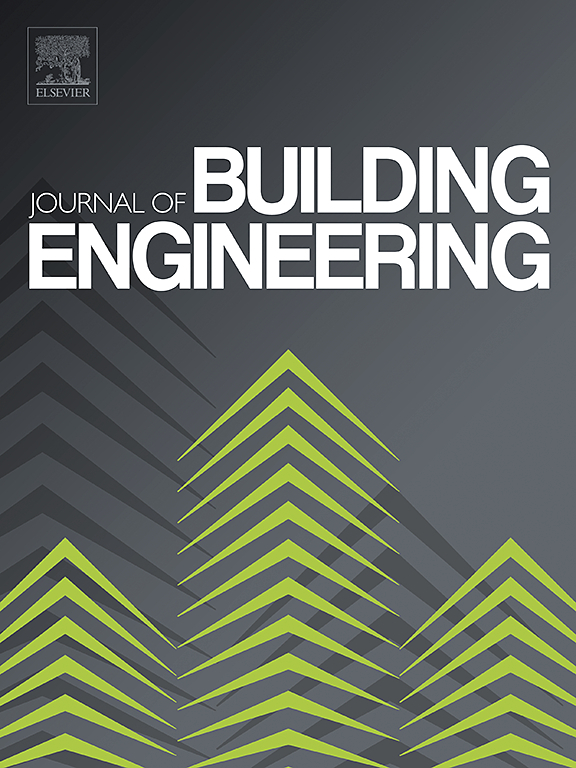Microwave-absorbing building materials: Assessing thickness and antenna separation in fly ash-ladle furnace slag one-part geopolymer
This geopolymer material effectively absorbs over 80% of microwave radiation with proper thickness and antenna spacing. It meets structural standards and is ideal for use in buildings exposed to Wi-Fi and 5G. Enhanced by C–S–H phases, it offers both mechanical strength and electromagnetic shielding. It helps protect public health and reduce signal interference. These findings support safer and smarter infrastructure development.

Fig. 19. Compositional distribution of one-part geopolymer.
Technology Overview
One-part geopolymer show superior physical and mechanical performance. Good dielectric properties are due to electromagnetic transparency of fly ash and slag. Ideal thickness and antenna separation maximized microwave absorption. C–S–H refined microstructure and enhanced microwave absorption.
Applications & Benefits
This study demonstrates that fly ash–ladle furnace slag one-part geopolymers can function as microwave-absorbing building materials, offering both structural strength (39.2 MPa) and high electromagnetic wave absorption (>80%) under optimized conditions (100 mm thickness, 20 mm antenna separation). These materials are particularly suited for buildings in high-frequency environments like schools and workplaces, where Wi-Fi and 5G are prevalent. The enhanced microwave absorption reduces electromagnetic interference, minimizes public exposure, and strengthens information security by limiting signal leakage. Additionally, their refined microstructure and good dielectric properties contribute to superior performance and durability, making them ideal for dual-function structural and protective applications.
Abstract:
This paper aims to examine the effect of thickness (20, 40, 60, 80, and 100 mm) and antenna separation (20, 40, 60, 80, and 100 mm) on microwave absorption ability of fly ash-ladle furnace slag one-part geopolymer. The one-part geopolymers exhibited a dense structure with a good compressive strength of 39.2 MPa, which satisfies the minimum requirement for structural building (>28.0 MPa). The geopolymers had good dielectric properties with a low dielectric constant and increased dielectric loss and loss tangent, subsequently contributing to the microwave absorption properties. The microwave absorption ability increased from 60.0% to >80.0% at an optimal thickness of 100.0 mm and antenna separation of 20.0 mm. The presence of calcium-silicate-hydrate (C–S–H) refined the microstructure and enhanced the microwave absorption performance. This work offered an optimal thickness and antenna separation to maximize the microwave absorption ability, which is crucial for reducing microwave interference and preventing public exposure in regions with widespread deployment of Wi-Fi and 5G networks.

Microwave-absorbing building materials: Assessing thickness and antenna separation in fly ash-ladle furnace slag one-part geopolymer
Author:Yong-Jie Hang, Cheng-Yong Heah, Yun-Ming Liew, Mohd Mustafa Al Bakri Abdullah, Yeng-Seng Lee, Wei-Hao Lee, Phakkhananan Pakawanit, Ern-Hun Kong, Shee-Ween Ong
Year:2024
Source publication:Journal of Building Engineering, Volume 87, 15 June 2024
Subfield Highest percentage:99% Architecture #2 / 203
https://www.sciencedirect.com/science/article/pii/S2352710224006648?via%3Dihub
